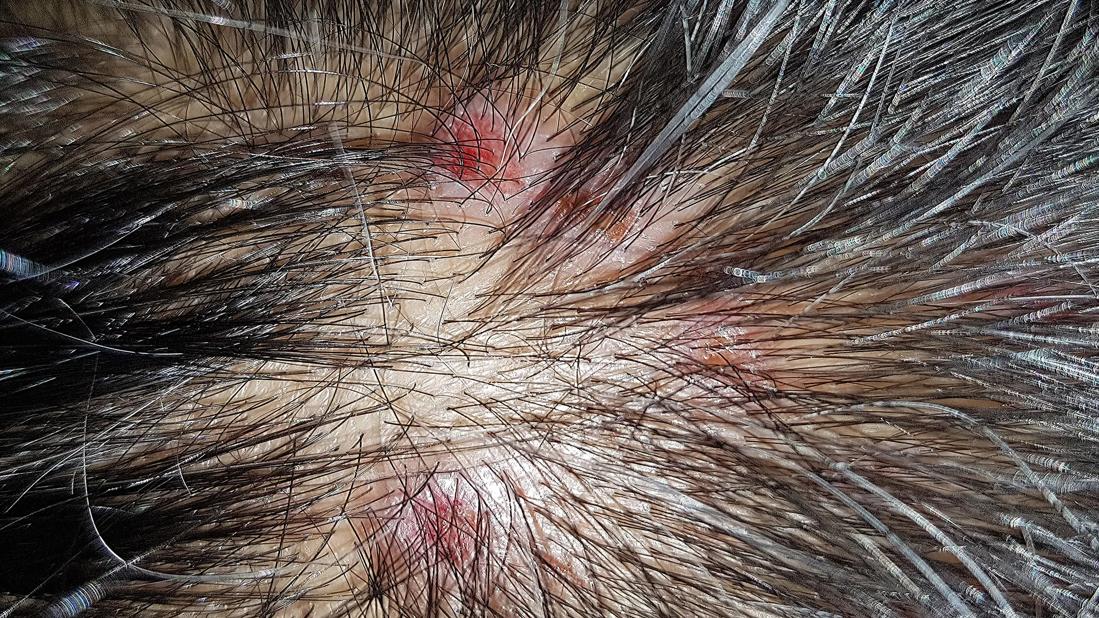Injury, itching, inflammation and irritants can all lead to scabs on your scalp

Scabs on your scalp can be unexpected and unsettling. But it’s important to identify and treat the underlying causes so you don’t further irritate the area and make it worse. Internal medicine physician Manjaree Daw, MD, explains some of the most common causes for scabs on your scalp and how to prevent further injury.
Advertisement
Cleveland Clinic is a non-profit academic medical center. Advertising on our site helps support our mission. We do not endorse non-Cleveland Clinic products or services. Policy
Scabs on your scalp form as part of your body’s natural healing process to stop bleeding and keep germs out. Some of the most common causes of scalp scabs include:
Scabs can form anywhere on your body, but they can be particularly troublesome when they form on your scalp.
“We’re hampered by the hair on our scalp and it always gets in the way,” says Dr. Daw. “Sometimes, scabs can be hidden and you don’t even know you have them, and sometimes, they can progress without you really knowing they are there.”
Treatment for scalp scabs varies depending on the underlying cause. Often, doctors will prescribe some form of topical corticosteroids or antihistamines to help with inflammation and to stop the itching sensation that often results in the formation of scabs.
During treatment, do whatever you can to avoid causing further breaks in your skin. These superficial wounds could increase your risk of a bacterial infection.
“Bacterial infections can be painful and cause fevers, redness and discharge,” reiterates Dr. Daw. “Treatment for a bacterial infection requires antibiotics.”
Advertisement
If your scalp is irritated from an allergic reaction to an ingredient or product, avoiding the product completely usually resolves the issue. You can reduce the likelihood of dermatitis herpetiformis flare-ups, for example, when you cut gluten out of your diet.
But for the most part, if you see or feel something on your scalp that concerns you or you’re dealing with any other symptoms, you should let a provider know.
“You should see a doctor if something is not healing, painful, bleeding or discharging, and if you feel something new on your scalp that’s not going away with treatment,” advises Dr. Daw.
“If we can examine the scabs on your scalp and talk to you about the history you’ve had with this issue, we can figure out what’s causing these issues and provide you with some relief.”
Advertisement
Learn more about our editorial process.
Advertisement

Leg-related symptoms indicate DVT, while chest symptoms point to a pulmonary embolism

Hemophilia A and B are both inherited blood-clotting disorders — the difference is in clotting proteins

Strengthening your skin barrier, simple routines and minimizing products are ongoing, popular trends

Early attention to skin wounds can help minimize their appearance later

Several conditions, like vitiligo and fungal infection, can cause a loss of pigmentation, leading to white spots or patches on your skin

Moisturizing, running a humidifier and adjusting your showers may help keep itchiness and irritation at bay

If the area is bleeding a lot or the wound is near your face or genitals, you likely need a specialist’s care

‘Zit stickers’ can help heal a new or popped pimple, but they’re limited when it comes to managing acne

Start having sex about 72 hours before ovulation, then at least every other day during your fertile window

Attachment theory suggests that your earliest relationships shape connections throughout your life

It isn’t a recognized mental health disorder, but research shows that problematic social media use can negatively affect your mental health, self-esteem and sleep